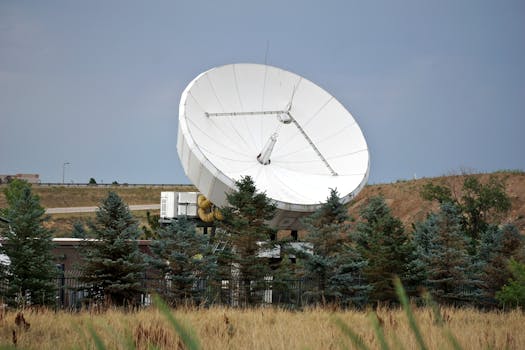
Orbiting Innovations: Exploring the Latest in Earth-observing technology
Earth-observing technology has revolutionized the way we understand and interact with our planet. With the help of satellites and remote sensing technologies, we can now monitor and analyze various aspects of the Earth’s surface and atmosphere, providing valuable insights into climate change, natural disasters, and environmental degradation. In this article, we will delve into the latest advancements in Earth-observing technology and its applications in various fields.
The latest advancements in Earth-observing technology have been made possible by the development of new satellite technologies, such as synthetic aperture radar (SAR) and hyperspectral imaging. These technologies enable the collection of high-resolution images and data, allowing for more accurate analysis and monitoring of the Earth’s surface and atmosphere. For instance, SAR technology can penetrate clouds and darkness, providing valuable insights into areas that were previously inaccessible.
Applications of Earth-Observing Technology
Earth-observing technology has a wide range of applications in various fields, including environmental monitoring, natural disaster management, and urban planning. For example, satellite imagery can be used to monitor deforestation, track changes in ocean currents, and detect early signs of natural disasters such as hurricanes and wildfires. Additionally, Earth-observing technology can be used to monitor and manage urban infrastructure, such as traffic flow and waste management.
One of the most significant applications of Earth-observing technology is in the field of climate change research. Satellites can be used to monitor changes in the Earth’s ice caps, sea levels, and ocean currents, providing valuable insights into the impacts of climate change. For instance, NASA’s Ice, Cloud, and Land Elevation Satellite (ICESat) has been used to monitor changes in the Earth’s ice caps, providing critical data for climate change research.
Future Developments and Challenges
Despite the significant advancements in Earth-observing technology, there are still several challenges that need to be addressed. One of the major challenges is the increasing amount of data being generated by satellites, which can be difficult to analyze and interpret. Additionally, the development of new satellite technologies requires significant investment and resources, which can be a barrier to entry for many countries and organizations.
However, there are also several future developments that are expected to shape the field of Earth-observing technology. For example, the development of small satellites and constellations is expected to increase the frequency and resolution of satellite imagery, providing more accurate and up-to-date information. Additionally, the integration of artificial intelligence and machine learning algorithms is expected to improve the analysis and interpretation of satellite data, enabling more accurate predictions and decision-making.
Conclusion
In conclusion, Earth-observing technology has revolutionized the way we understand and interact with our planet. With the latest advancements in satellite technologies and remote sensing, we can now monitor and analyze various aspects of the Earth’s surface and atmosphere, providing valuable insights into climate change, natural disasters, and environmental degradation. While there are still several challenges that need to be addressed, the future developments in this field are expected to be significant, with the potential to improve our understanding of the Earth and enable more accurate predictions and decision-making.


